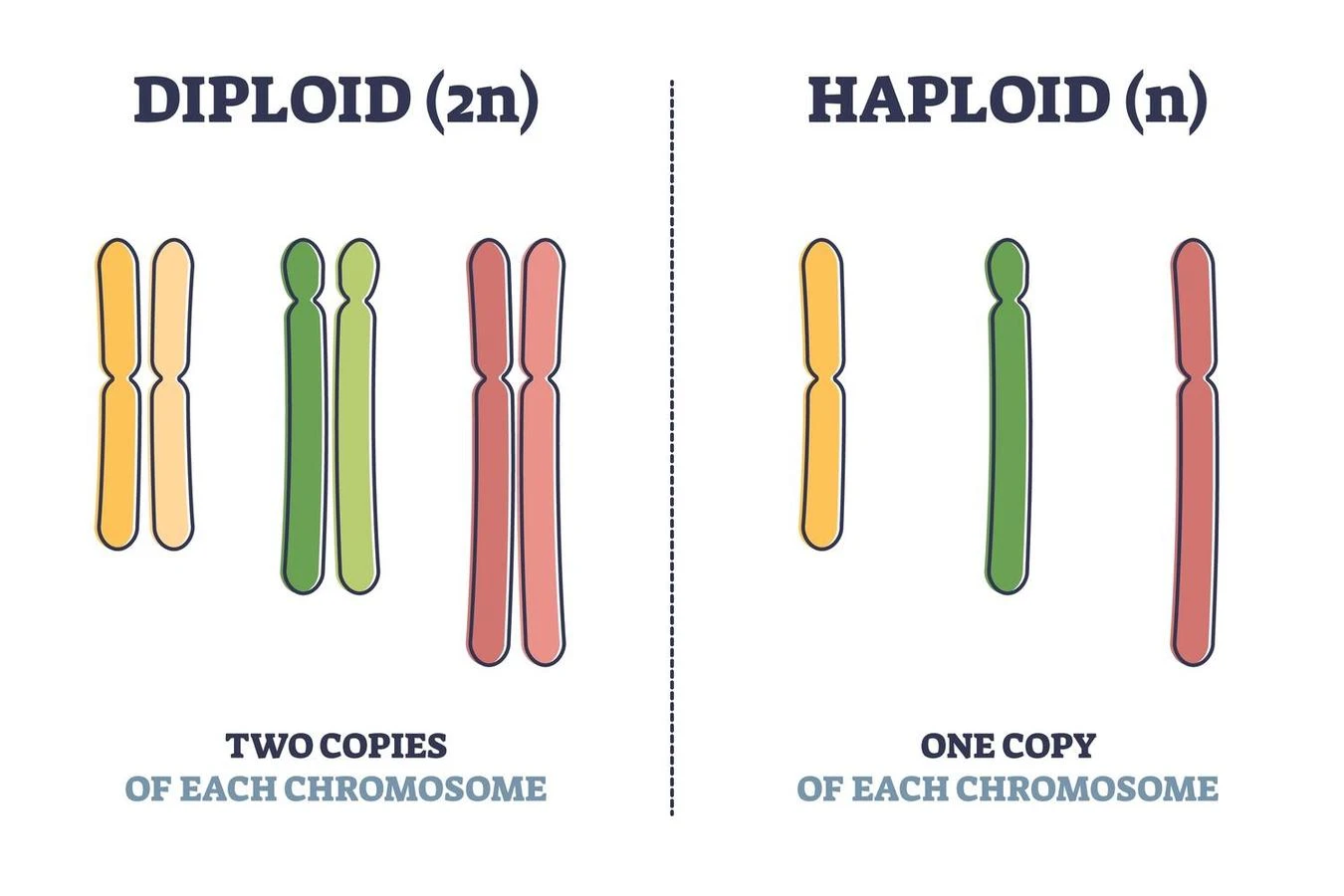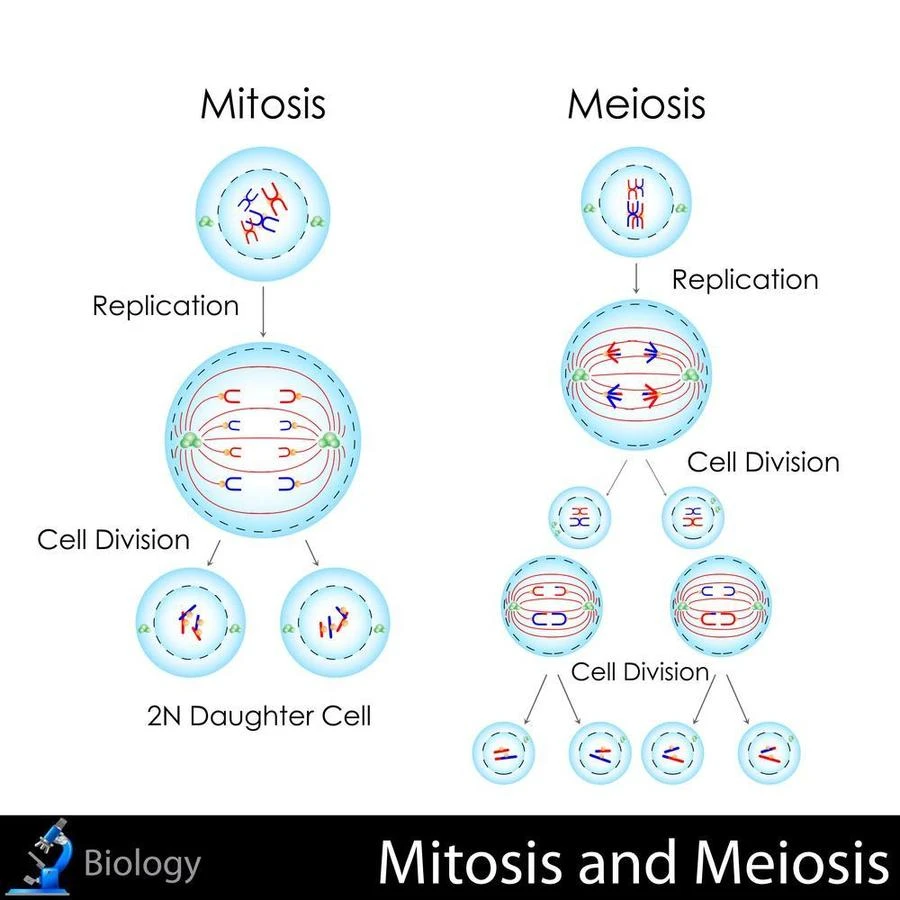Introduction
Haploid and diploid indicate the set of chromosomes in a cell or organism. Haploid refers to half the number found in the typical diploid cells of the same species and are typically found in gametes (eggs or sperm) or certain single-celled organisms. They contain a single set of genetic information, which can be beneficial for processes such as reproduction and genetic variation. This genetic diversity allows the way for adaptation and evolution.
What is a haploid?
A haploid set of chromosomes refers to the complete set of chromosomes presents in a single gamete or sex cell (sperm or egg). It is a single set of chromosomes that results from the reduction division (meiosis) of a diploid cell (with two sets of chromosomes) into four haploid cells. The haploid number of chromosomes in a species is designated as “n”.
- A common example of a haploid set of chromosomes is found in human sperm or eggs, which contain 23 chromosomes each. This results from the reduction division (meiosis) of diploid cells (which contain 46 chromosomes, or two sets of 23 chromosomes each) into haploid cells.
- In other species, the haploid number can vary. For example, in fruit flies (Drosophila melanogaster), the haploid number is 8, while in wheat (Triticum aestivum), it is 7.
- Since haploid cells have a single set of chromosomes, each gene has only one allele. It means that each gamete has just one allele for a given gene, and when two gametes (male and female) fuse, two alleles of the gene combine and express their phenotype based on the dominant recessive interaction.
What is diploid?
Diploid refers to a cell or organism that has two sets of chromosomes. The diploid number of chromosomes is designated as “2n” in a species, where “n” is the haploid number of chromosomes (the number present in a single set). Each chromosome is present in pairs in diploid cells, with one chromosome from each parent. A diploid set of chromosomes is the typical number found in most body cells of an organism, as opposed to the haploid set found in gametes or sex cells (sperm and egg).
Diploid cells have two sets of chromosomes, which provide stability to the genetic material and ensure that each cell has a complete set of chromosomes. This stability is essential for normal cell function and proper cell division.

Role in Division of cells
- Mitosis and meiosis are cell division processes that are related to the concept of haploid and diploid cells.
- In mitosis, a single diploid cell (2n) divides into two identical diploid daughter cells, each with the same number of chromosomes as the parent cell (2n). This type of cell division is used for the growth and repair of tissues in multicellular organisms.
- In meiosis, a single diploid cell (2n) undergoes two rounds of division, resulting in the formation of four haploid daughter cells (n). Meiosis is involved in the creation of haploid gametes for sexual reproduction. The reduction in chromosome number from 2n to n ensures that when the gametes fuse during fertilization, the resulting zygote has the normal diploid number of chromosomes (2n).
- As a result, mitosis produces identical diploid cells, whereas meiosis produces genetically heterogeneous haploid cells. These processes are important for the maintenance of chromosome number and genetic diversity in multicellular organisms.

Difference between haploid and diploid
The main differences between the two are:
- Chromosome number: Single set of chromosomes can be seen in a Haploid, while two sets of chromosomes are present in a diploid. The haploid number of chromosomes is designated as “n”, while the diploid number is designated as “2n”.
- Genetic material: Haploid cells contain half the amount of genetic material as diploid cells. This results in haploid cells having a unique combination of alleles for each gene. On the other hand, diploid cells have two alleles for each gene, one from each parent.
- Function: Haploid cells are primarily involved in sexual reproduction, as they provide genetic diversity when two haploid cells combine such as sperm and egg they form a diploid cell resulting in a zygote. Diploid cells are found in most organisms, including the human body, and provide stability to the genetic material.
- Cell division: Haploid cells are produced by meiosis, a type of cell division that reduces the chromosome number by half. Diploid cells can be produced by either meiosis or mitosis, a type of cell division that results in the production of two identical daughter cells.
Conclusion
In eukaryotic species, the genetic components are enclosed within the cell nucleus and are known as chromosomes. The ploidy of an organism is defined by the number of chromosomal sets. Haploid cells are those that have a single set of chromosomes and are generated as a result of meiosis. It is widespread among gametes. Diploids have two chromosomal sets and are produced during mitotic cell division. Although haploid and diploid are distinct, each shares important characteristics.
Frequently Asked Questions
1. What exactly do you mean by karyotype?
A karyotype is a visual representation of the complete set of chromosomes in a cell and is used to diagnose genetic disorders and chromosomal abnormalities.
2. What effect do chemical mutagens have on polyploidy?
Chemical mutagens can induce changes in the DNA of cells and can lead to polyploidy. Polyploidy, which is the presence of extra sets of chromosomes in a cell, can be caused by errors during cell division, such as failures in meiosis, as well as exposure to environmental factors like radiation and certain chemicals, including mutagens.
3. Is a brain cell haploid or diploid?
Human brain cells are somatic cells. All somatic cells in the human body are diploid, which means they have two copies of each chromosome.
 Mission Statement
Mission Statement
“Empower every student to achieve full potential”
88Guru has been established with the social objective of making quality video-based learning material available to all Indian students. Technology, Connectivity and Social Media are rapidly changing the world of Education and we wish to lead the transformation of the tuition industry in India.
88Guru is the perfect complement to the current tuition model. 88Guru creates a wonderful opportunity for children and parents to bond while engaging in a valuable learning activity. It also provides the complete curriculum at your fingertips for those moments when you need some help at short notice. We believe that this mode of tuition could be transformational, adding hours to a child's day while providing complete control over the learning process.
Every course is taught by the best teachers from India's top schools and conducted in an engaging manner to keep students involved. The e-learning process consists of video-based instructions, computer-graded assignments, and a dashboard which allows the student and parent to track progress.



